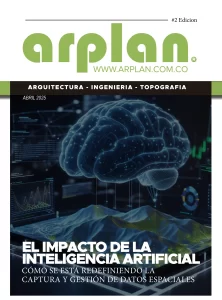Introduction
Over the past decade, Building Information Modeling (BIM) technology has profoundly transformed the construction industry by enhancing efficiency in design, execution, and management of buildings. However, its application in historic buildings has presented unique challenges due to the irregular and unique nature of these properties. Here, Heritage Building Information Modeling (HBIM) comes into play as a crucial evolution of BIM, specifically designed to address the needs of conservation, documentation, and management of heritage buildings. HBIM not only adopts the structure and benefits of conventional BIM but also incorporates additional capabilities to handle the unique challenges associated with historic buildings. These include the need to document old materials, obsolete construction techniques, and various interventions that these buildings have experienced throughout their history. By integrating advanced technologies such as photogrammetry, LiDAR laser scanning, and Unmanned Aerial Vehicles (UAVs), HBIM enables a precise three-dimensional representation of structures that are true testimonies to our cultural past. Moreover, the use of HBIM in heritage conservation not only helps to maintain the structural integrity of historic buildings but also ensures that crucial information is not lost over time. By storing data in a centralized model, HBIM facilitates better planning and decision-making for future interventions, which is fundamental to prolonging the useful life of heritage assets and maintaining their historical and cultural value for future generations. This article aims to explore in an introductory manner what HBIM is, how it is implemented through various advanced technologies, and what its tangible benefits are in the field of architectural heritage conservation. In doing so, it seeks to provide architects and heritage conservators with a clear understanding of how this technology can be a valuable tool in their efforts to preserve our built legacy.
What is HBIM?
Heritage Building Information Modeling (HBIM) is a multidisciplinary process that extends the capabilities of Building Information Modeling (BIM) to the conservation, management, and documentation of historic buildings. By incorporating in detail the unique and often complex characteristics of heritage buildings, HBIM becomes an invaluable tool for architects, engineers, and conservators working with historically valuable structures.

Illustration 1: LiDAR Point Clouds and Photogrammetry Model. Church of the Immaculate Conception, Cajicá, Colombia. Source and Copyrights reserved. www.arplan.com.co
Definition and Objectives of HBIM
HBIM is defined as the adaptation of the BIM model to integrate detailed and specific information about historic buildings. This includes, but is not limited to, the precise geometry of the building, historical construction materials, specific construction techniques, and any structural modifications made over the years. The primary objective of HBIM is to create a comprehensive digital repository that not only facilitates the restoration and maintenance of historic buildings but also serves as a digital record for future references and studies.
Differentiation between Standard BIM and HBIM
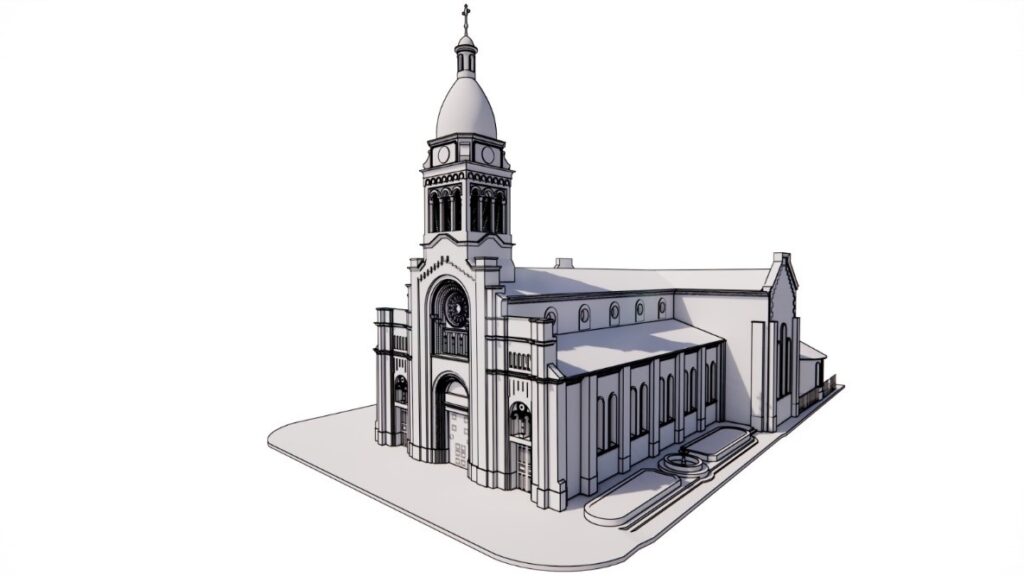

Illustration 2: HBIM Model in Revit. Church of the Immaculate Conception, Cajicá, Colombia. Source and Copyrights reserved. www.arplan.com.co
Unlike standard BIM, which is primarily oriented towards efficiency in the construction and management of new buildings, HBIM focuses on historical accuracy and conservation. While BIM uses standardized parametric models that easily adapt to new constructions, HBIM requires a more flexible and detailed approach to capture the peculiarities of historic buildings. These models must be capable of incorporating irregularities and unique features not found in modern constructions. For example, in an HBIM project, dimensions and shapes do not conform to contemporary standards and often require the creation of custom components to faithfully replicate historical features. Additionally, HBIM must be able to integrate data obtained from various sources such as historical records, old photographs, and archaeological studies to construct a model that accurately reflects the building’s temporal evolution. This level of detail and specificity makes HBIM an essential tool not only for conservation and restoration but also for research and education, providing a rich and multidimensional base to understand and appreciate built heritage. With the advancement of technology and the growing importance of heritage conservation, HBIM is gaining recognition and adoption in restoration and maintenance projects worldwide, opening new possibilities for preserving our cultural heritage.
Key Technologies in HBIM
The success of HBIM in documenting and managing historic buildings largely depends on the efficient use of advanced technologies that allow for the precise capture of data. These technologies include photogrammetry, LiDAR laser scanning, and the use of Unmanned Aerial Vehicles (UAVs). Each of these tools plays a crucial role in creating detailed and accurate models that are fundamental for HBIM.
Photogrammetry
Photogrammetry is a technique that uses photographs taken from different angles to create topographic maps or three-dimensional models. In the context of HBIM, this technology is particularly useful for capturing details of facades and ornaments of buildings that would otherwise be difficult to document. By processing multiple high-resolution images, professionals can generate precise digital models that capture not only the shape but also the texture of the materials, which is crucial for conservation analysis.
LiDAR Laser Scanning
LiDAR (Light Detection and Ranging) is a laser scanning technology that measures the distance between the scanner and an object by calculating the time it takes for a laser pulse to return to the sensor. This technology is invaluable for HBIM due to its ability to capture very precise geometric data of complex and extensive structures in a short amount of time. LiDAR data are particularly useful for modeling the internal and external geometries of heritage buildings, providing a solid foundation for the HBIM model.

Illustration 3: 3D Laser Scanning Point Clouds. Church of the Immaculate Conception, Cajicá, Colombia. Source and Copyrights reserved. www.arplan.com.co
Unmanned Aerial Vehicles (UAVs)
UAVs, commonly known as drones, are increasingly used in heritage documentation due to their ability to access difficult areas and capture data from aerial perspectives. Equipped with high-definition cameras or LiDAR sensors, drones can collect detailed information about parts of the building that are inaccessible by conventional methods. This is particularly useful for inspecting roofs, towers, or domes of historic buildings.
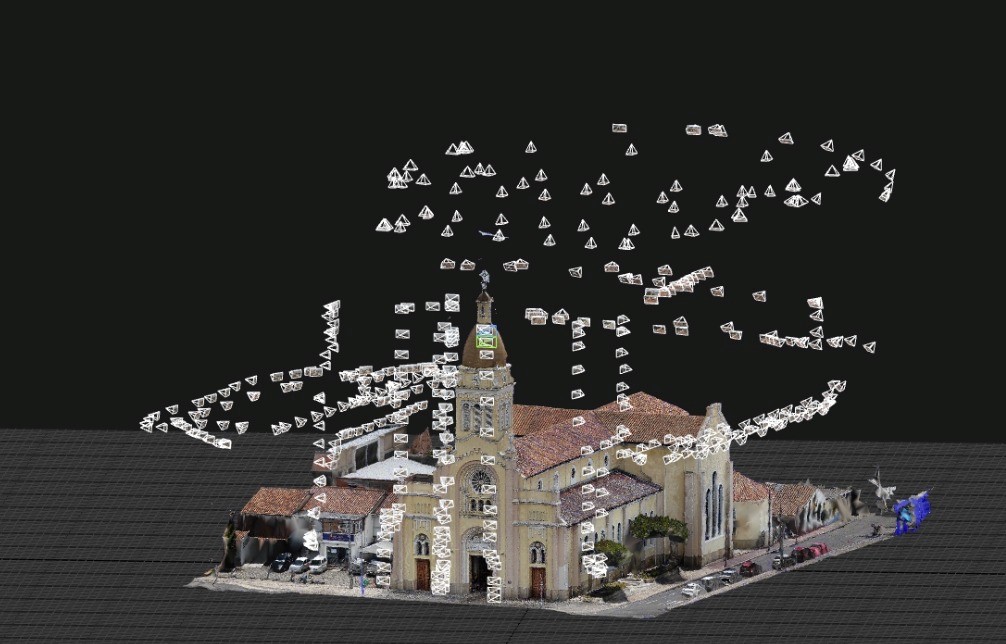
Illustration 4: Processing of photographs taken with a drone. Church of the Immaculate Conception, Cajicá, Colombia. Source and Copyrights reserved. www.arplan.com.co
Integration of Technologies
A successful HBIM project often requires the integration of several of these technologies to fully capture the diversity of elements present in historic buildings. For example, LiDAR can be used to obtain an accurate model of the building’s overall structure, while photogrammetry might be used to detail specific elements with rich textures. UAV data can complement these methods by providing views and access to areas that would otherwise not be captured.
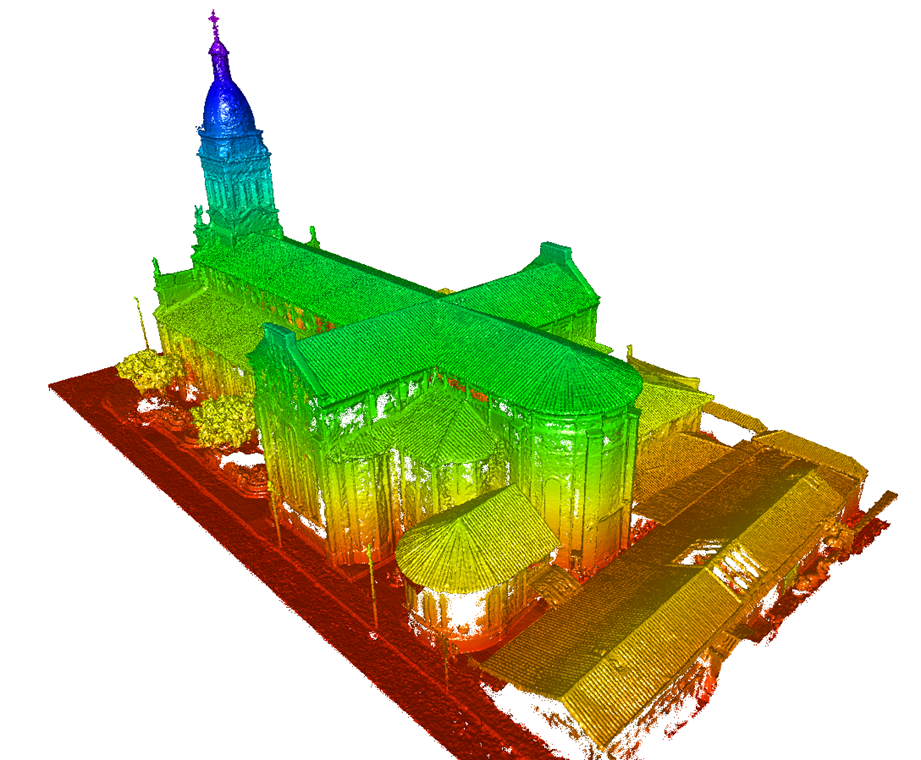
Illustration 5: 3D Laser Scanning and Photogrammetry Point Clouds. Church of the Immaculate Conception, Cajicá, Colombia. Source and Copyrights reserved. www.arplan.com.co
These technologies not only increase the precision and efficiency in creating HBIM models but also open new possibilities for exploring and understanding our cultural heritage. Through their application, conservators can gain a more comprehensive and detailed view of historic buildings, facilitating more informed decisions regarding their conservation and restoration.
Benefits of HBIM
Heritage Building Information Modeling (HBIM) offers numerous benefits for the management of architectural heritage as well as restoration and conservation projects. These benefits are reflected not only in greater accuracy in documenting buildings but also in more efficient management and the ability to perform more informed interventions.
Improvement in the Documentation of Historic Buildings
One of the main benefits of HBIM is its ability to significantly enhance the documentation of historic buildings. Using advanced technologies such as LiDAR and photogrammetry, HBIM enables the capture of architectural details with a precision that far exceeds traditional methods. This is crucial for understanding ancient construction techniques and for preserving information that might be lost due to the deterioration over time.
Preservation of Architectural Details: HBIM maintains a digital record of architectural details that are essential for any future restoration work and for historical studies. Accessible and Durable Archives: The information stored in HBIM models is easily accessible and less susceptible to physical damage, ensuring its availability for future generations.
Facilitation of Precise Interventions
The detailed model provided by HBIM allows conservators and restorers to plan interventions with a much higher level of precision. This reduces the risk of damaging historical elements during restoration works and ensures that the interventions are appropriate and effective.
Planning of Restorations: HBIM models aid in the planning and visualization of restorations before they physically begin, allowing adjustments in the design to avoid costly mistakes. Structural Analysis: HBIM can also include structural analyses, which help identify risk areas and plan reinforcements that respect the historical integrity of the building.
Improved Management and Maintenance
Heritage management greatly benefits from the implementation of HBIM, as it provides a comprehensive tool for managing daily operations and long-term maintenance of historic buildings. Centralization of Information: All data related to a historic building, from architectural details to previous interventions and conservation data, are centrally stored and easily accessible. Maintenance Scheduling: HBIM facilitates the scheduling of regular maintenance and the early identification of potential problems, which can extend the building’s life span and reduce long-term costs.
Promotion of Interdisciplinary Collaboration HBIM, as an integrating platform, fosters closer collaboration among architects, engineers, conservators, historians, and other professionals involved in heritage management.
Improvement of Communication: HBIM models provide a common visual base that improves communication among different stakeholders, facilitating collaborative and well-informed decision-making. Education and Training: HBIM models are also exceptional tools for the education and training of new generations of architects and conservators, providing rich and detailed visual resources.
HBIM not only enhances the precision in the documentation and management of historic buildings but also plays a crucial role in the conservation of architectural heritage. Its ability to integrate advanced technology with respect for historical authenticity makes it an indispensable tool in the field of heritage conservation.
Implementation of HBIM
Implementing Heritage Building Information Modeling (HBIM) involves a detailed process from the initial data capture to the creation of a complete digital model that can be used for the management and conservation of heritage. This process not only requires the integration of advanced technologies but also careful planning to ensure that the results are accurate and useful.
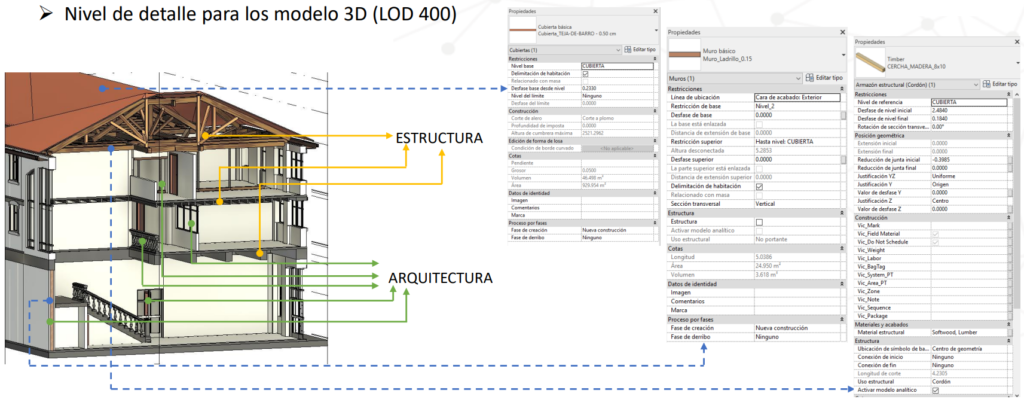
Illustration 6: HBIM Detail and Information Level. Source: www.arplan.com.co
Process and Workflows in HBIM Implementation
- Data Capture: The first step in implementing HBIM is the physical data capture of the building. This is generally done through LiDAR laser scanning, photogrammetry, and UAVs to obtain a detailed representation of the building in its current state. These data form the basis on which the HBIM model will be built.
- Modeling: Once the data are collected, the next step is the creation of the HBIM model. This involves converting the raw data into a 3D model that integrates both the geometric information and the metadata related to each element of the building, such as historical materials, construction techniques, and any previous interventions.
- Information Integration: HBIM must incorporate and organize multiple layers of historical and technical information. This includes details from historical documents to recent structural studies. Each piece of information is associated with the relevant elements of the model, creating a comprehensive resource for building management.
- Validation and Calibration: The model is reviewed and validated to ensure that it accurately reflects the physical structure and condition of the building. This may require adjustments based on the practical experience of conservators and other heritage experts.
- Implementation and Use: Finally, the HBIM model is put into use, providing a dynamic tool for heritage management. It can be used to plan and visualize conservation interventions, facilitate maintenance, and serve as an educational tool.
CASE STUDIES OF HBIM IMPLEMENTATION PIONEERING PROJECTS IN COLOMBIA
Arplan has been a leading figure in the adoption and implementation of advanced technologies such as BIM and LiDAR in architectural documentation in Colombia. Its commitment to innovation has led to a series of pioneering projects that have set precedents in the industry. Below are some of these projects highlighted:
SURVEY OF CASTILLO SAN FELIPE DE BARAJAS, CARTAGENA
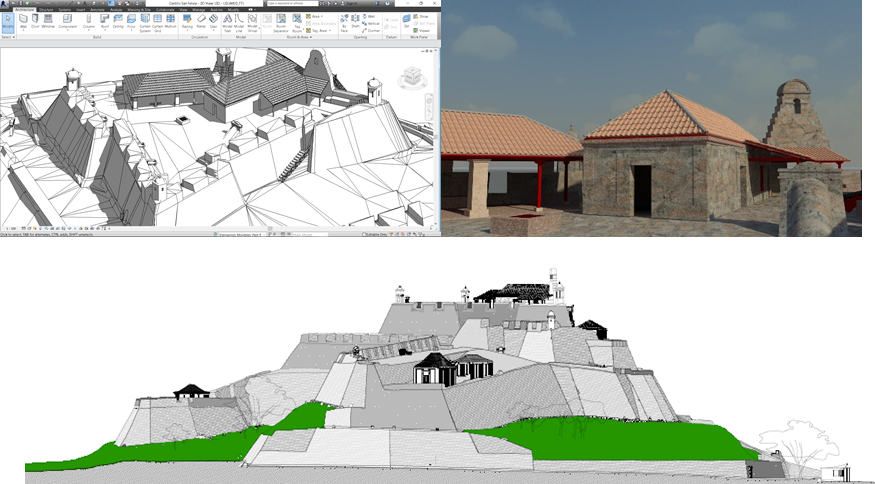
Illustration 7: Scan to HBIM Model of Castillo San Felipe de Barajas, Colombia. Source: Arplan www.arplan.com.co
Description: Detailed documentation of this iconic fortress, preserving its history and preparing it for future renovations. The Castillo San Felipe de Barajas in Cartagena, Colombia, is an emblematic colonial fortress built in 1657. Characterized by its terraced design, thick walls made of coral, and a complex network of tunnels and galleries, it is located on the San Lázaro hill. Its structure was strategically designed for defense, with bastions and parapets to house cannons and a main square at the highest level. This castle is not only a masterpiece of military architecture but also represents an important period in the history of Colombia, symbolizing the nation’s resilience and strength.
Technologies Used: LiDAR scanning to accurately capture the complexity of the structure, photogrammetry, BIM simulation, artificial lighting simulation, pathological simulation
SURVEY OF THE CHURCH OF SAN JOSÉ, BARRANQUILLA
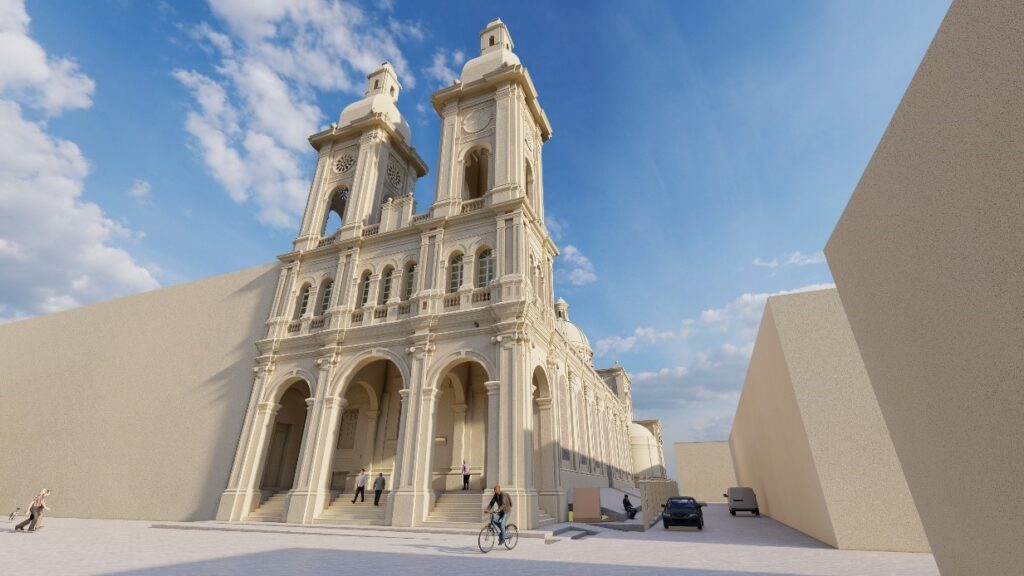

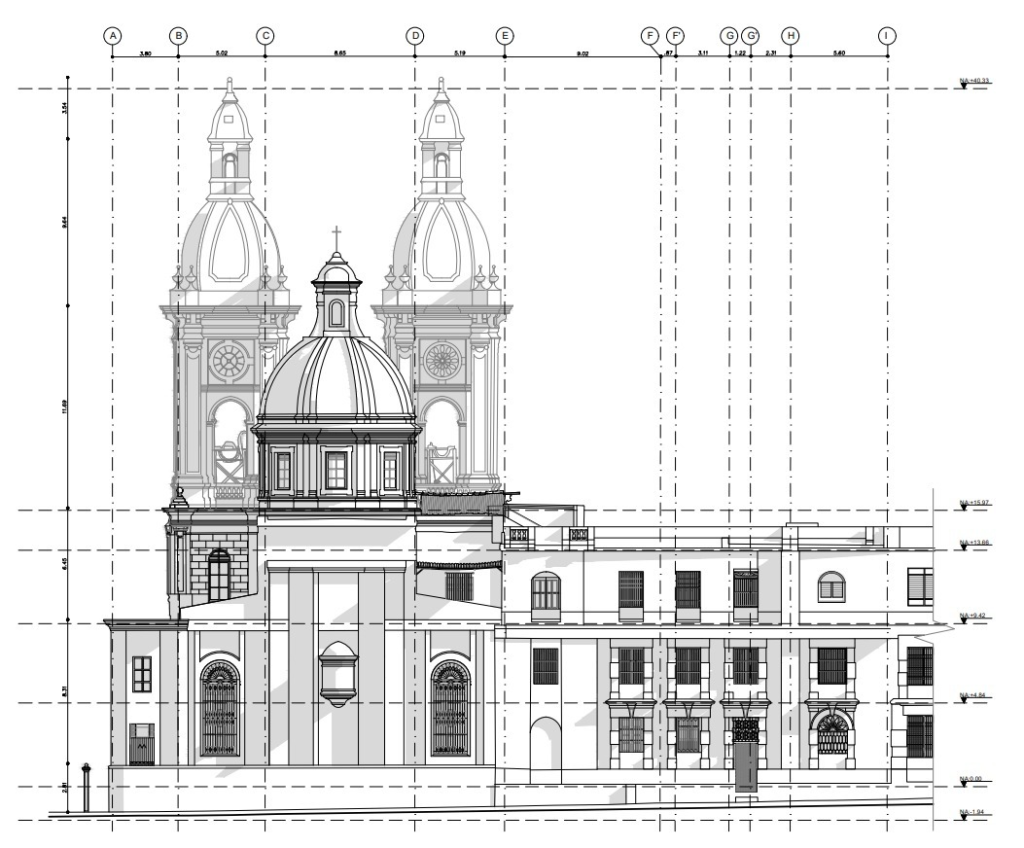
Illustration 8: Scan to HBIM Model. Church of San José, Barranquilla, Colombia. Source: Arplan Colombia. www.arplan.com.co
Description: A project to document another vital religious structure in Barranquilla. The Church of San José in Barranquilla, built in 1910, is a manifestation of the neoclassical style in Colombian architecture. Located at Calle 40 with Carrera 39, the church features a symmetrical facade with imposing columns, a triangular pediment, and harmonious proportions. Classic elements such as cornices and moldings are combined with subtly worked ornamental details. Inside, the arrangement and design of the spaces reflect a continuity with the exterior aesthetics, maintaining the simplicity and elegance characteristic of neoclassicism. The Church of San José is a significant piece in the architectural heritage of Barranquilla, representing the transition and adaptation of European architectural styles in the Colombian context.
Technologies Used: Integration of LiDAR and BIM for a complete record.
Despite its many benefits, the implementation of HBIM also presents challenges, including the need for significant investments in technology and training, the management of large volumes of data, and the need for collaboration among very diverse disciplines. Moreover, adapting modeling technologies to reflect the idiosyncrasies of historic buildings remains an active area of development in the field of HBIM. While HBIM is a powerful tool for heritage conservation, its successful implementation requires a careful and considerate approach that takes into account both technical precision and historical sensitivity.
Some Standards and Regulations
The adoption of Heritage Building Information Modeling (HBIM) in heritage conservation projects should be guided by a series of standards and regulations that ensure the quality, precision, and interoperability of the models generated. These standards are crucial for establishing consistent and reliable practices in the cultural heritage sector.
Importance of Standards in HBIM Implementing standards in HBIM helps to: Ensure Quality and Precision: Standards help ensure that the captured data and generated models are of high quality and precision, which is fundamental for any conservation intervention. Facilitate Interoperability: Standards promote compatibility between different systems and software, facilitating collaborative work among various disciplines and specialists. Improve Sustainability: Establishing standardized practices can lead to better planning and execution of conservation projects, resulting in more sustainable interventions over the long term.
International Standards and Guidelines
- ISO 19650 (Organization and Digitization of Information about Buildings and Civil Engineering Works Including Building Information Modelling): This series of standards provides guidelines on information management throughout the lifecycle of a construction using BIM. Although initially not focused on heritage, its principles can be adapted to the HBIM context to improve the management of heritage documentation.
- PAS 1192-6 (Specification for Collaboration for the Management of Information Security in the Built Environment): Although oriented towards security, this specification includes useful guidelines for information management that can be applied in managing the risk associated with heritage buildings.
- Local and Specific Heritage Regulations: Various countries and regions may have their own specific regulations and standards governing heritage conservation. These may include guidelines on documentation technologies, intervention methods in historic buildings, and reporting requirements.
Implementation of Standards in HBIM Projects
To effectively implement these standards in an HBIM project, it is recommended to: Assess Specific Requirements: Analyze the specific requirements of the project and the heritage site to identify which standards are most applicable. Training and Education: Provide ongoing training to all those involved in the project on the relevant standards and their application in HBIM. Review and Continuous Update: Stay updated with developments in international and local standards to ensure that the HBIM project remains relevant and effective.
Conclusion
Heritage Building Information Modeling (HBIM) represents a significant advancement in the conservation and management of architectural heritage. Through the integration of advanced digital technologies and traditional conservation methods, HBIM enables more precise documentation and more efficient management of historic buildings. This digital model not only facilitates careful and evidence-based restoration interventions but also provides a platform for long-term planning and informed decision-making.
The benefits of HBIM are multiple and range from improved accuracy in documentation to the facilitation of precise interventions and effective heritage management. By storing detailed and easily accessible data, HBIM serves as an invaluable resource for multiple generations, ensuring that historical and cultural information is preserved and effectively used to maintain and celebrate our built legacy.
However, the implementation of HBIM is not without challenges. It requires significant investments in technology, training, and the development of interdisciplinary workflows. Additionally, the process of adapting HBIM to the particularities of each historic building can be complex and requires a meticulous approach to ensure the accuracy and relevance of the model.
Despite these challenges, the potential of HBIM to transform heritage management is immense. As technology continues to advance and HBIM methodologies are refined, its adoption is likely to become more widespread, offering new opportunities for the conservation of cultural heritage globally. Ultimately, HBIM is not only a tool for conserving the past but also a bridge to the future of cultural heritage preservation, providing the means for future generations to understand, appreciate, and maintain the architectural treasures of humanity.

